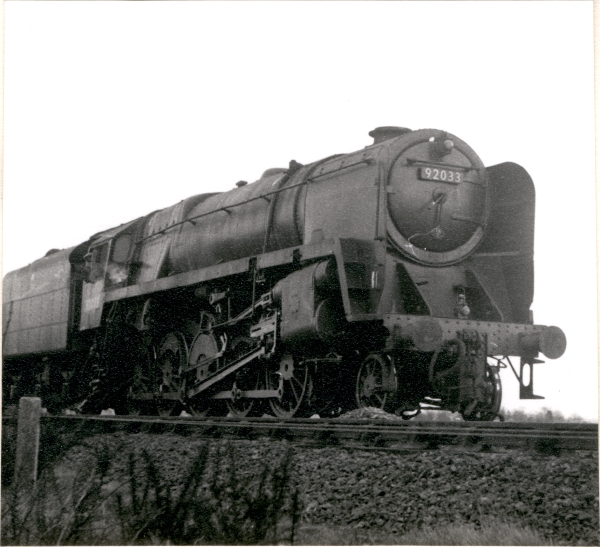World War II saw much of Europe's railway infrastructure devastated by invasion and bombing. To counter the situation, Britain's War Department produced two types of cheap, low maintenance locomotives for shipment overseas to aid the war torn countries get their railway systems back together. The locomotives, designed by R. A. Riddles, came in 2-8-0 and 2-10-0 varieties and many of the 2-8-0's, along with 25 of the 2-10-0's, found service with British Railways after the war. The 2-8-0's were a common sight on the London Extension as they clanked slowly along with a slow freight train. One of these 'Austerities', No. 90491, is pictured as it waits at Whetstone's M1 motorway bridge construction site in 1962, having brought in material supplies.
WD 2-8-0 'Austerity' No. 90491 at the M1 bridge construction site. See Details
R. A. Riddles, designer of the War Department Austerity locomotives, eventually took the post of British Railways Chief Mechanical Engineer upon Nationalisation in 1947. A former LMS man, Riddles produced a series of standard locomotive designs which utilised common parts and were easy to maintain. The locomotives became known as the BR 'Standards', and eventually replaced many of the Big Four types on lines across the country. Each design was given a number - the Standard 2's were small and lightly powered, whilst the Standard 9's were large heavy freight locomotives. The Standard 5's (or 5MT to use their British Railways classification) 4-6-0's saw a lot of use on the London Extension in later years, with this one, No. 73010, being caught on a parcels train near Whetstone, circa 1963.
BR Standard 5MT 4-6-0, No. 73010 with a parcels train at Whetstone. See Details
Riddles' final design for British Railways was his Standard 9, or 9F, 2-10-0 heavy freight locomotives. These powerful machines saw use all over the country, but are probably most well known for the work they did on the London Extension between the yards at Annesley and Woodford Halse. The fast coal train service between these two locations was a superb piece of time tabling, with locomotives dropping off one train and picking up another for the return journey, several times a day. These fast freight trains earned the nicknames of 'Windcutters' and 'Runners', and were synonymous with the 9F's. This photograph shows single chimney fitted class 9F 2-10-0, No. 92033, as it waits for a service train to pass at Whetstone in 1963.
9F class 2-10-0, No. 92033 at Whetstone. See Details










